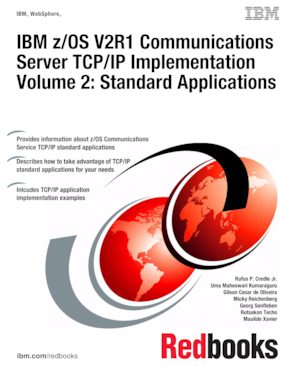Abstract
For more than 40 years, IBM® mainframes have supported an extraordinary portion of the worlds computing work, providing centralized corporate databases and mission-critical enterprise-wide applications. IBM System z®, the latest generation of the IBM distinguished family of mainframe systems, has come a long way from its IBM System/360 heritage. Likewise, its IBM z/OS® operating system is far superior to its predecessors in providing, among many other capabilities, world-class, state-of-the-art support for the TCP/IP Internet protocol suite.
TCP/IP is a large and evolving collection of communication protocols managed by the Internet Engineering Task Force (IETF), an open, volunteer organization. Because of its openness, the TCP/IP protocol suite has become the foundation for the set of technologies that form the basis of the Internet. The convergence of IBM mainframe capabilities with Internet technology, connectivity, and standards (particularly TCP/IP) is dramatically changing the face of information technology and driving requirements for ever more secure, scalable, and highly available mainframe TCP/IP implementations.
The IBM z/OS Communications Server TCP/IP Implementation series provides understandable, step-by-step guidance for enabling the most commonly used and important functions of z/OS Communications Server TCP/IP.
This IBM Redbooks® publication provides useful implementation scenarios and configuration recommendations for many of the TCP/IP standard applications that z/OS Communications Server supports.
Table of Contents
Chapter 1. The syslog daemon
Chapter 2. TN3270E Telnet server
Chapter 3. File Transfer Protocol
Chapter 4. Simple Network Management Protocol
Chapter 5. IP printing
Chapter 6. INETD
Chapter 7. z/OS mail servers
Chapter 8. z/OS UNIX Telnet server
Chapter 9. Remote execution
Appendix A. Environment variables
Appendix B. Sample files provided with TCP/IP
Appendix C. Configuration files: TN3270E stand-alone scenario
Appendix D. Multiple TN3270E Telnet servers and sysplex distribution using the LUNS and LUNR scenario
Appendix E. FTP and translation tables
Appendix F. Our implementation environment
